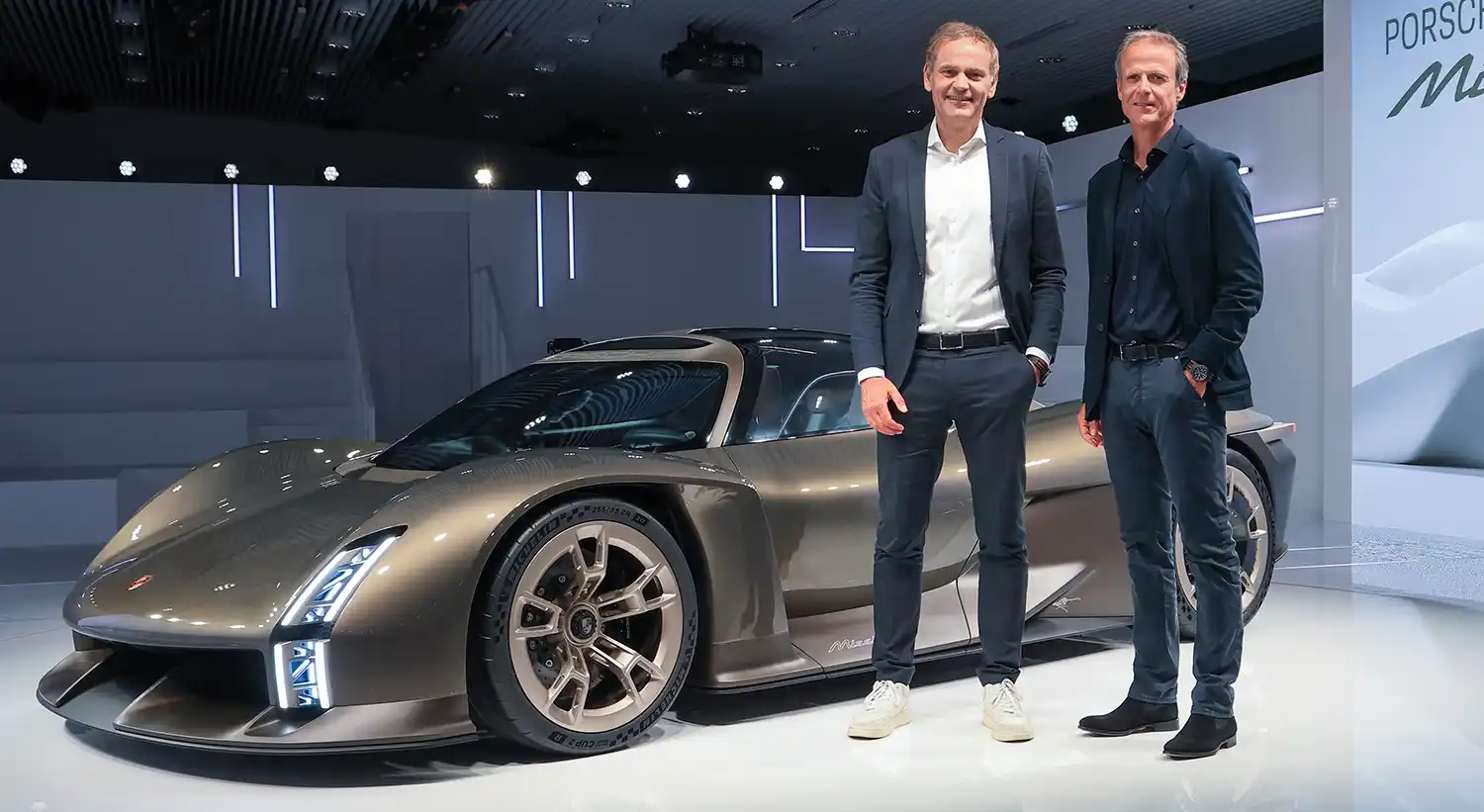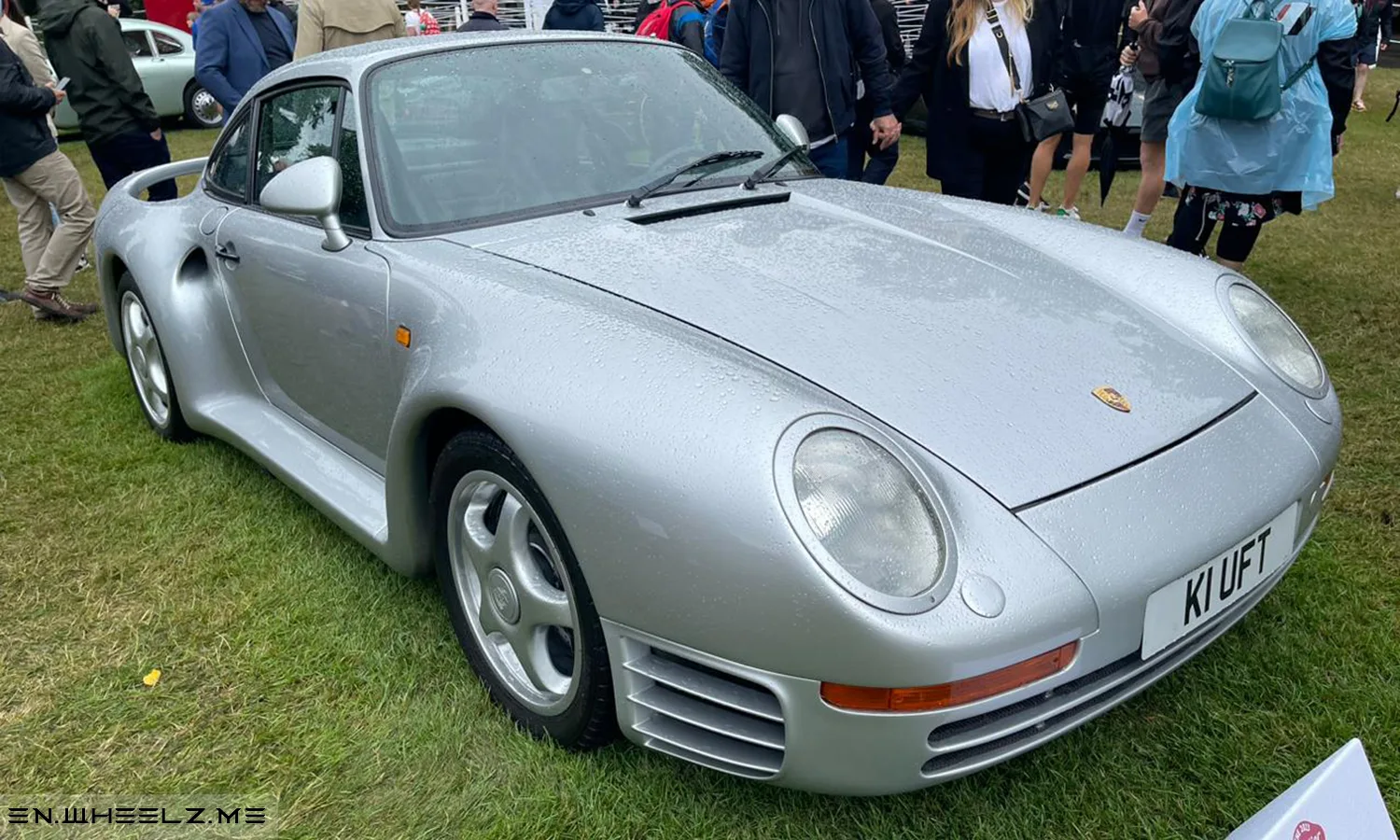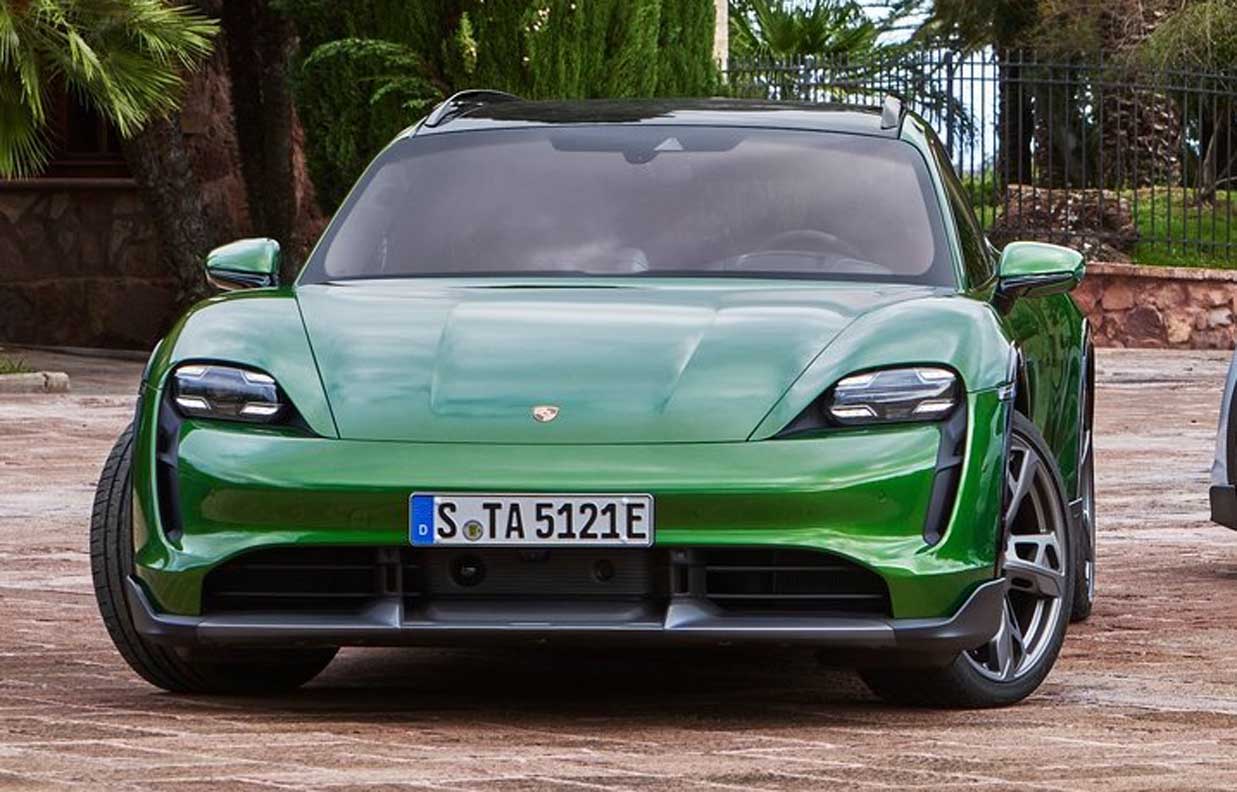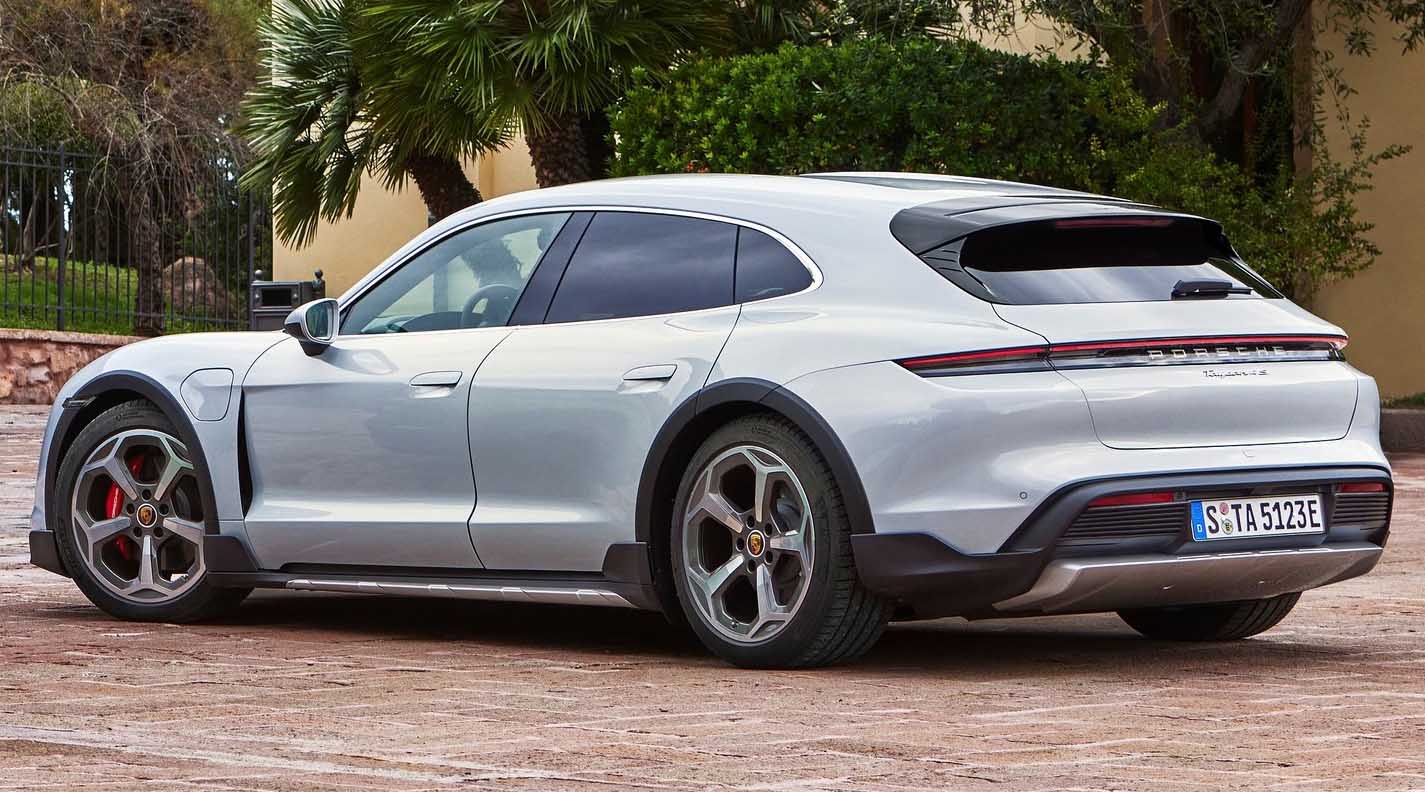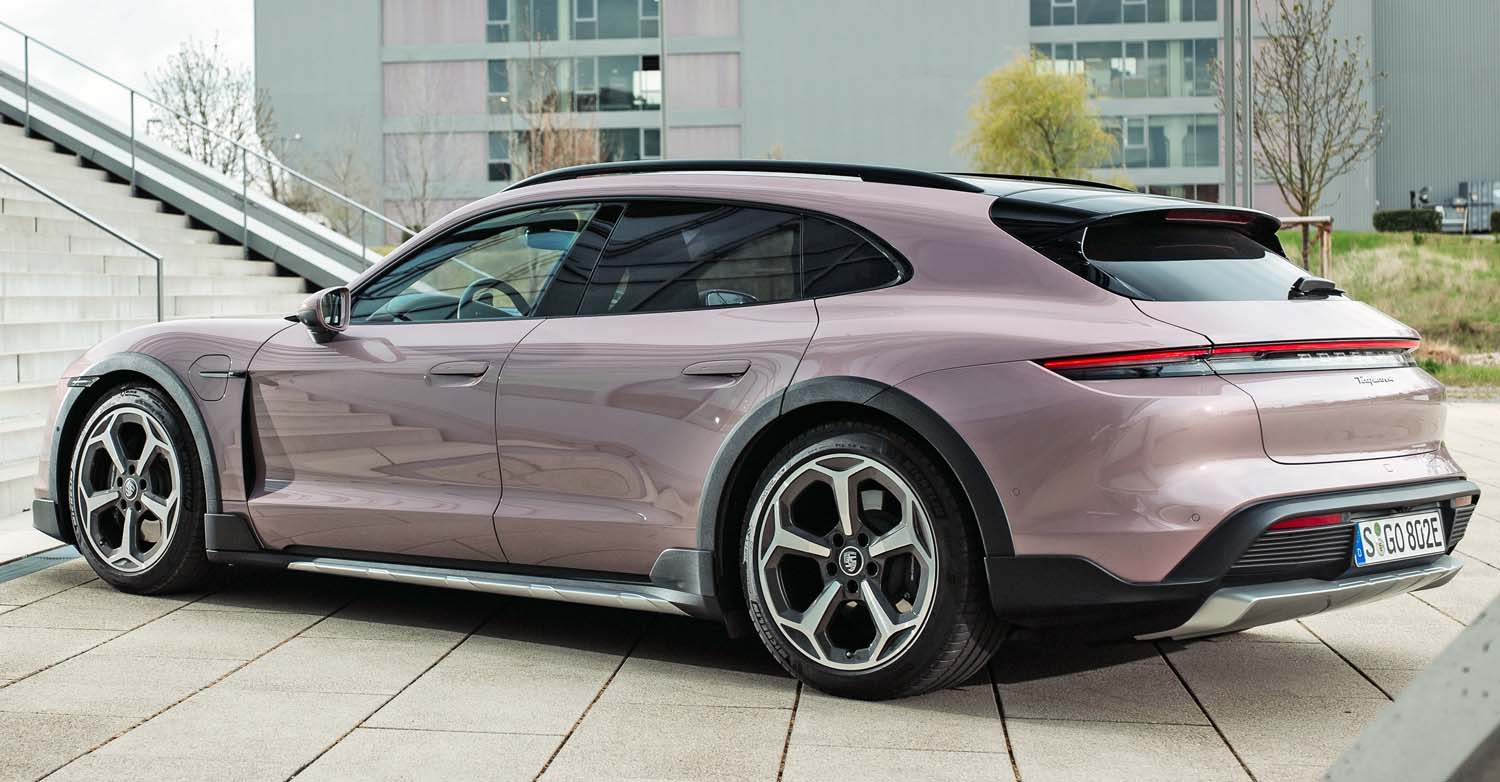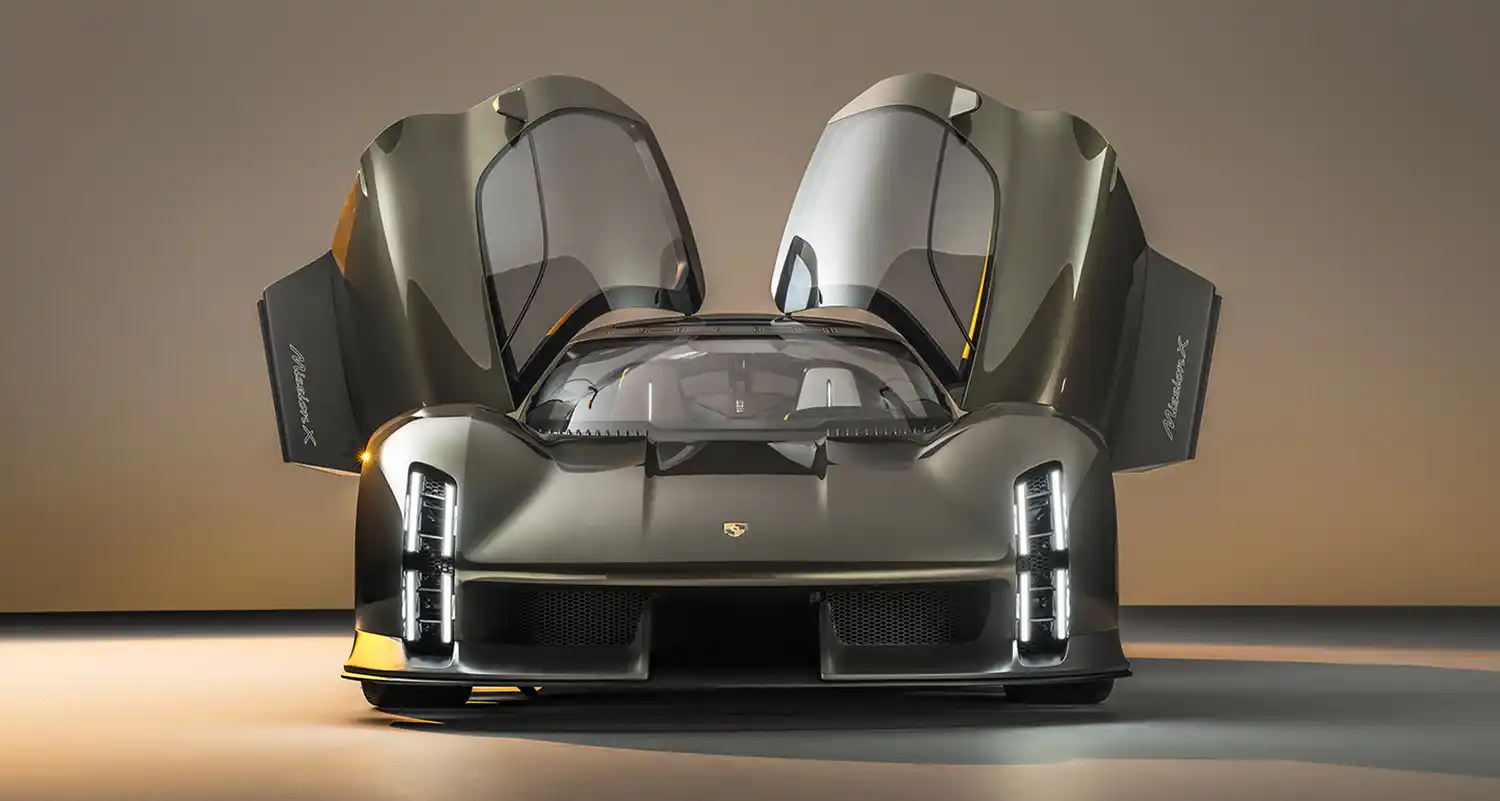
The Mission X is a dramatic-looking two-seater and will celebrate its premiere on 8 June 2023 – the eve of the ‘75 Years of Porsche Sports Cars’ exhibition opening at the Porsche Museum in Stuttgart-Zuffenhausen. A special date: 75 years ago, on 8 June 1948, the 356 ‘No. 1’ Roadster became the first automobile bearing the name Porsche to receive its general operating permit. This was the birth of the sports car brand.
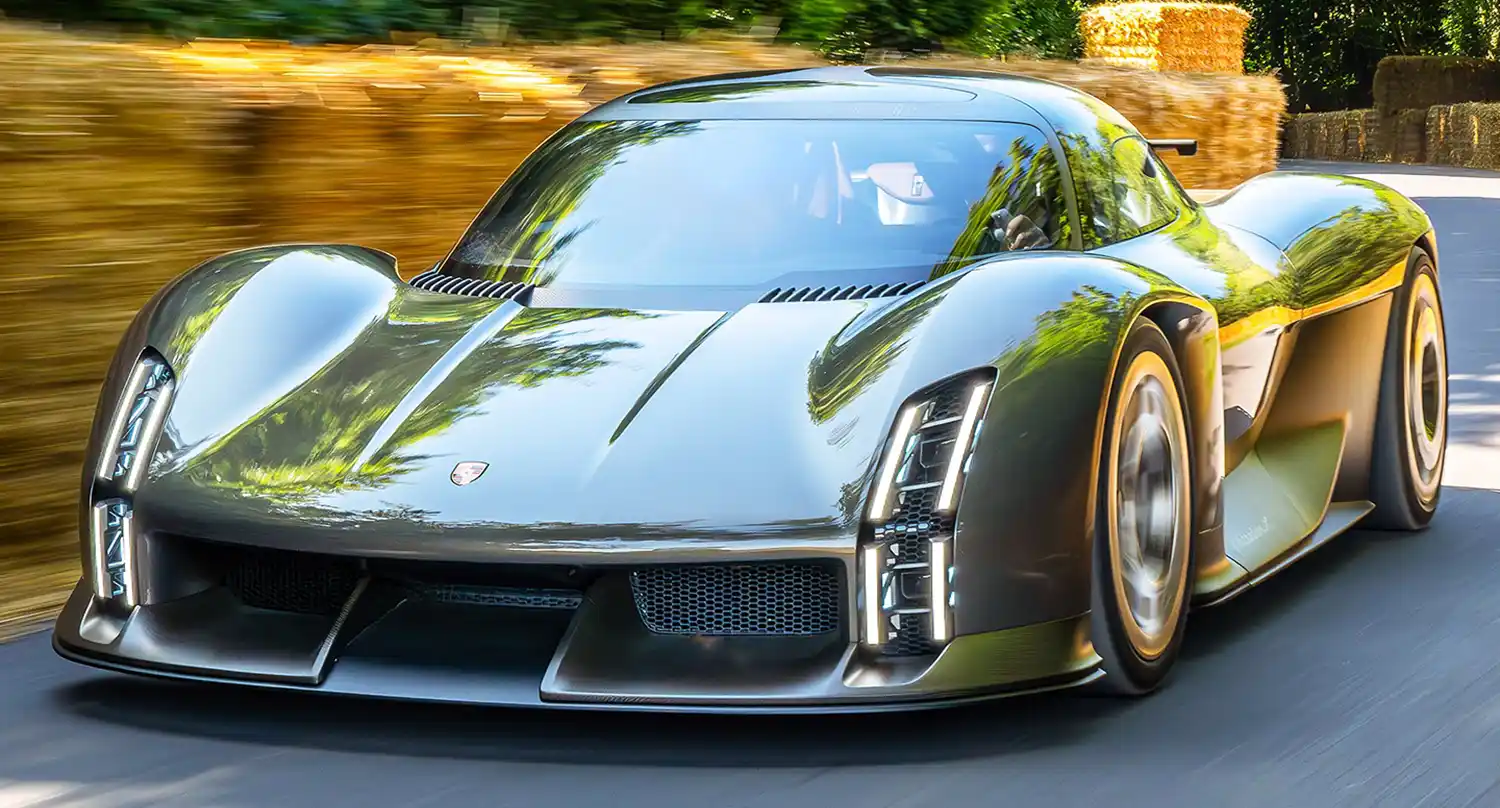
“The Porsche Mission X is a technology beacon for the sports car of the future. It picks up the torch of iconic sports cars of decades past: like the 959, the Carrera GT and the 918 Spyder before it, the Mission X provides critical impetus for the evolutionary development of future vehicle concepts,” says Oliver Blume, Chairman of the Executive Board of Porsche AG. “Daring to dream and dream cars are two sides of the same coin for us: Porsche has only remained Porsche by constantly changing.”
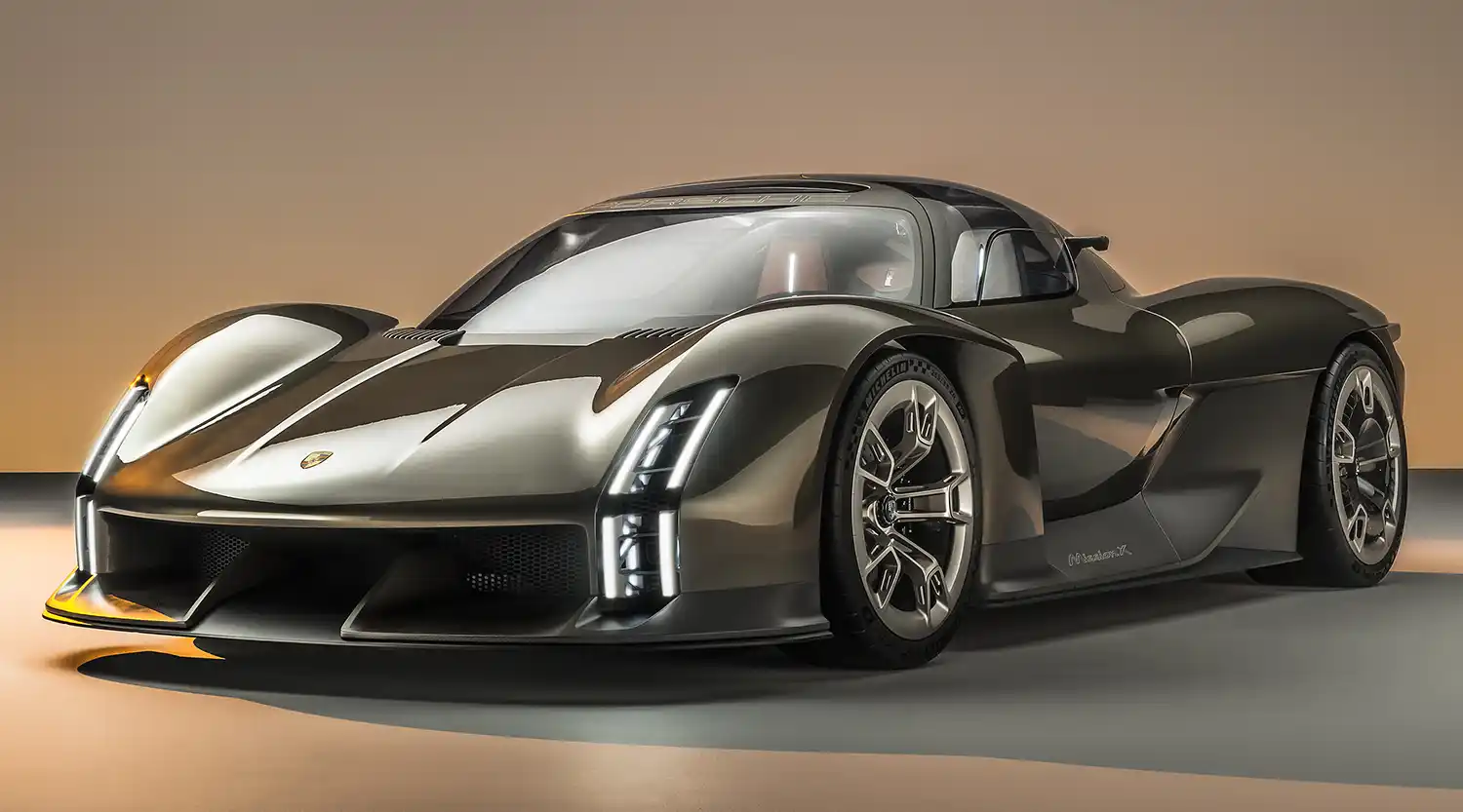
Michael Mauer, Head of Style Porsche, says: “The Mission X is a clear commitment to the core of the brand. The continuing, enhanced expression of our brand and product identity is an important compass for us to navigate the development of our series-production models. The concept study symbolises a symbiosis of unmistakable motorsport DNA with a luxurious overall impression.”

Measuring approximately 4.5 metres long and two metres wide, the Mission X concept study is a relatively compact hypercar. With a wheelbase of 2.73 metres, it has the dimensions of the Carrera GT and 918 Spyder. For aerodynamic purposes, the concept car has mixed-size tyres, with 20-inch wheels at the front and 21-inch wheels at the rear.
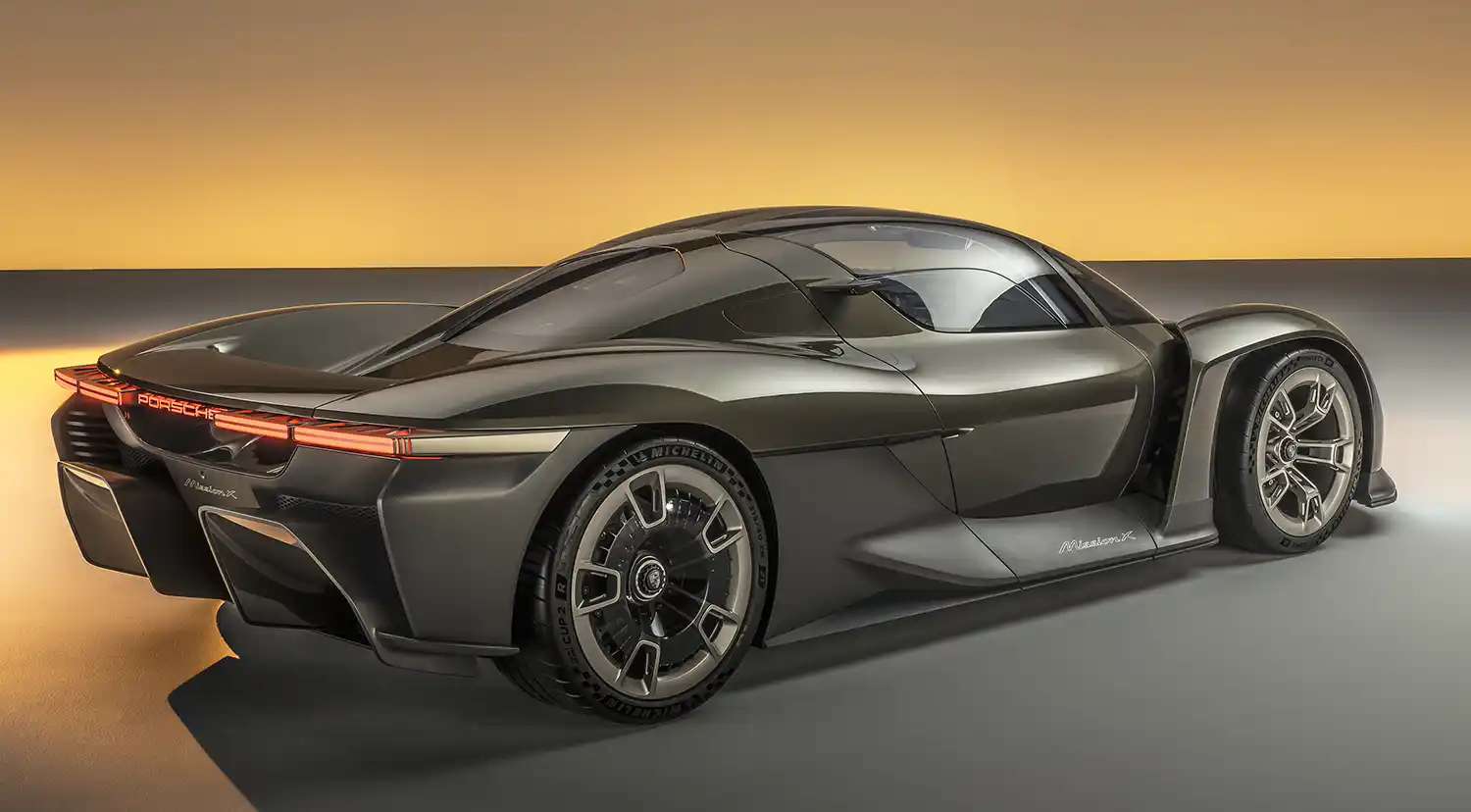
Design: classic brand elements reinterpreted
The Mission X represents the pinnacle of performance and modern luxury. At the same time, its sculpted form and muscular lines demonstrate that hypercars don’t have to look aggressive. The low-slung bodywork, which is less than 1.2 metres tall, is finished in Rocket Metallic – an elegant paint colour specially designed for the concept study. Design elements in a carbon-weave finish are found below the beltline. These components are varnished in a satin finish and are therefore slightly coloured, but their material structure remains recognisable.
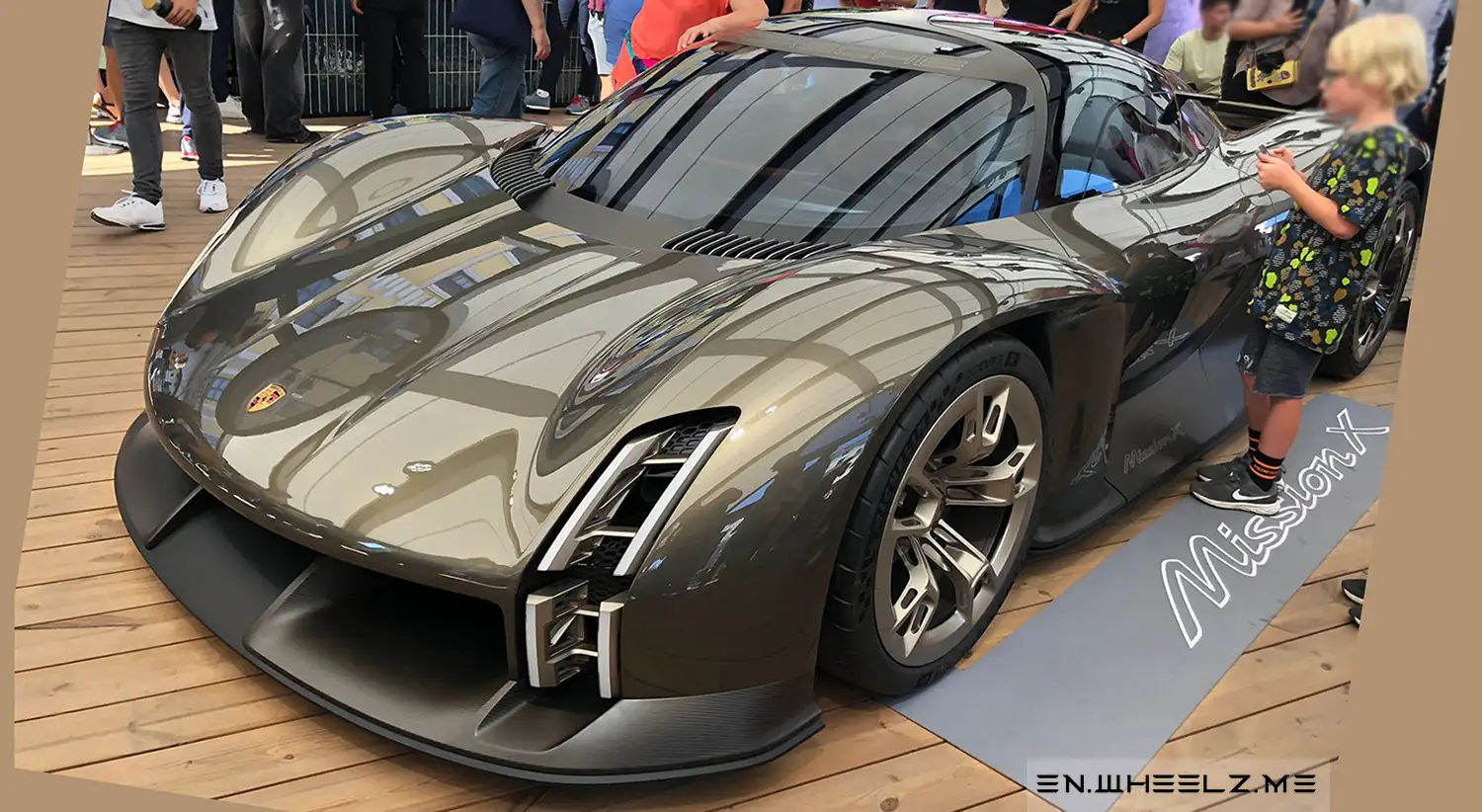
The wheels of the concept study feature elaborate details: the rear axle is fitted with almost transparent aeroblades, which are designed like turbines for better cooling of the brakes. A lightweight glass dome with an exoskeleton made of carbon-fibre- reinforced plastic extends over both occupants. The Le Mans-style doors are attached to the A-pillar and the roof; they open forwards and upwards. This type of door was previously used on the legendary Porsche 917 racing car. Another eye-catcher is the light signature: for the Mission X, the designers have reinterpreted the characteristic Porsche four-point graphic. The vertical base form of the headlights was inspired by historic racing cars such as the Porsche 906 and 908 and drawn well down towards the road. A high-tech support structure frames the LED light modules and presents the exposed narrow elements of daytime running lights and indicators. When activated, the light opens up like an eye blinking open. Fully illuminated, the headlights make a confident statement.
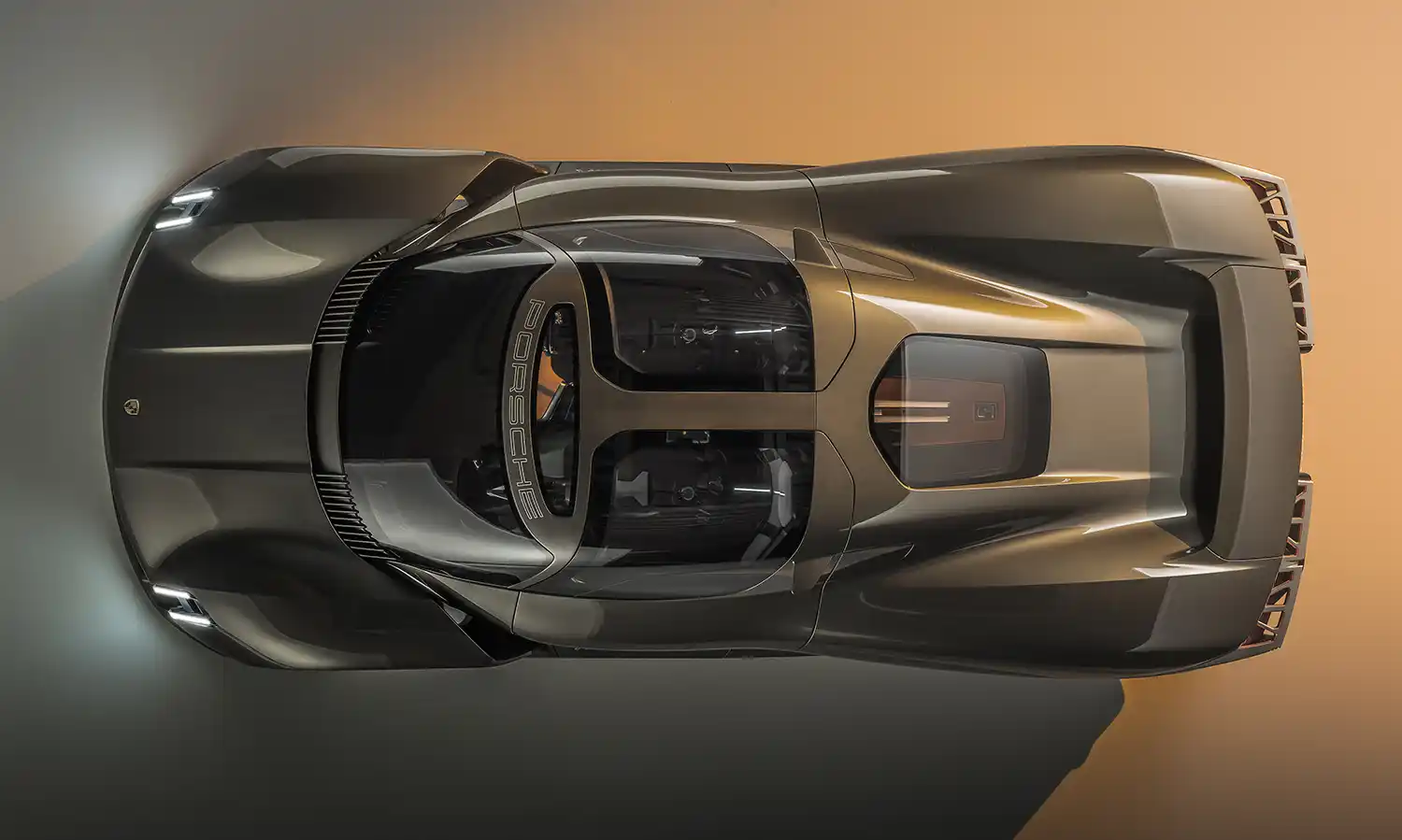
A full-length light unit that appears to float characterises the rear of the Mission X. Transparent, illuminated Porsche lettering is a standout feature. The sculptural rear light emerges, as if suspended in the air, from a modern support structure and extends across the entire width of the vehicle in four segments. While charging, the ‘E’ of the Porsche lettering pulsates, adding a sense of mystery.
One special detail is the modernised Porsche crest, which makes its debut on the Mission X. Brushed precious metal, a three-dimensional honeycomb structure, a refreshed heraldic beast and more subtle gold colour – on close inspection, these are the differences between the modernised Porsche crest and its immediate forerunner. With its cleaner and more state-of-the-art execution, the refined crest communicates the character of Porsche. On the Mission X, it is found on the bonnet and steering wheel as well as in monochrome form on the wheel centres.
The driver focus can be seen in the asymmetry of the interior and its colour concept. The two seats are coloured differently. Apart from the leather pads in Andalusia Brown, the driver’s seat is Kalahari Grey and forms a single unit of colour with the centre console and the dashboard. The passenger seat is in the contrasting Andalusia Brown shade. Beyond the CFRP seat shells, and their six-point seatbelts integrated into the monocoque, further motorsport parallels include the open-top steering wheel, which has mode switches and shift paddles. There are multiple cameras on board. Recording starts as soon as the driver presses the Record button (REC) on the multi-purpose controller.
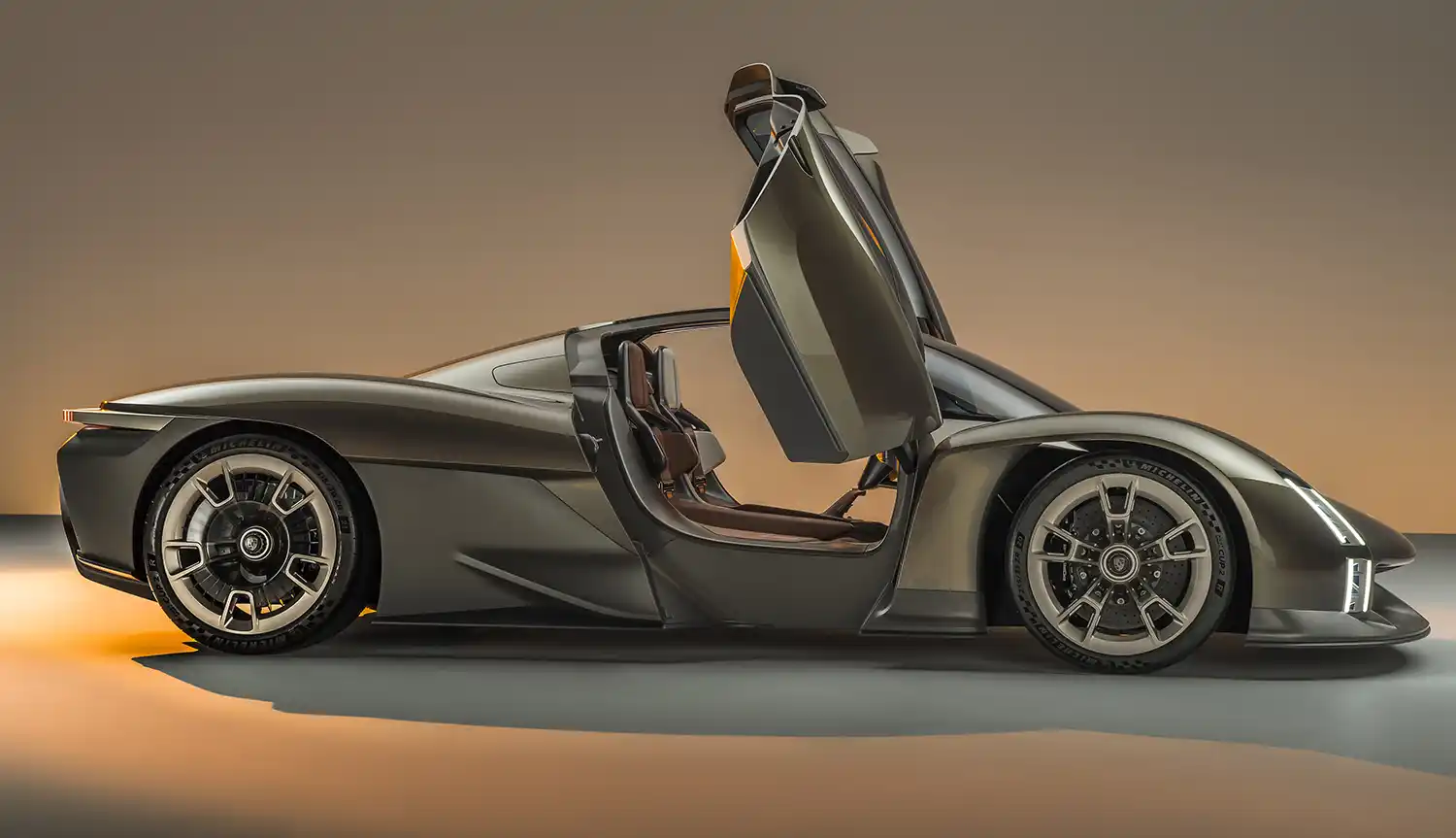
Another highlight is found on the passenger side, where there is a bayonet system embedded in the instrument panel to which a stopwatch module can be attached. For the Mission X, Porsche Design has created a special stopwatch module with an analogue and digital display. The clocks are designed for both racetrack and rally use and can display the lap times or vital data of the driver, among other information.
Technical vision: top marks in power-to-weight ratio, downforce and charging performance
Porsche exemplifies e-performance yet is also a pioneer in sustainable mobility. The concept study meets both objectives in full measure. Our visions: if the Mission X goes into series production, then it should
- be the fastest road-legal vehicle around the Nürburgring Nordschleife;
- have a power-to-weight ratio of roughly one PS per kilogram;
- achieve downforce values that are well in excess of those delivered by the current 911 GT3 RS;
- offer significantly improved charging performance with its 900-volt system architecture and charge roughly twice as quickly as Porsche’s current frontrunner, the Taycan Turbo S.

The battery is installed centrally behind the vehicle’s seats. This ‘e-core layout’ centres the mass in the car. As with a conventionally powered mid-engined car, this provides the basis for excellent agility.
Predecessors: innovative super sports cars from Porsche
The fastest series-production car of its time; first series-production Porsche to be made of carbon fibre, and the first road-legal vehicle to beat the seven-minute mark on the Nürburgring Nordschleife – the Porsche 959 (1985), Carrera GT (2003) and 918 Spyder (2013) were milestone models in the world of super sports cars. And that makes them the conceptual forerunners of the Mission X.
In 1985, the Porsche 959 made its debut as a technology platform. Its 450 PS six-cylinder twin-turbo boxer engine, combined with an aerodynamically optimised body, propelled the super sports car to a top speed of 317 km/h – then the world record for a series-production sports car.
With its V10 engine and 612 PS, fierce design and, not least, its incomparable driving experience, the Porsche Carrera GT remains an icon among super sports cars to this day.
Porsche hybrid technology reached a spectacular zenith with the 918 Spyder. In September 2013, the 652 kW (887 PS) two-seater was the first road-approved vehicle to crack the seven-minute barrier on the Nürburgring’s 20.6-kilometre Nordschleife, completing the lap in 6:57 minutes. Porsche aims to stay true to this standard of the highest e-performance: our vision, should the Mission X go into series production, is for it to be the fastest road-legal vehicle on the Nürburgring Nordschleife.
